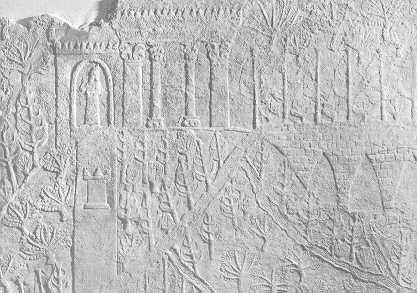As many of you know I recently converted to Atheism. However, even now that I am an Atheist, I am still questioning the nature of faith and belief in religion. It is clear to me that we have found enough evidence for evolution for it to be logically considered more convincing than any religion. For the sake of this blog I will use Christianity as my main example as I know more about it than I know about other religions, but I'm hoping that the same principle can be applied to any religion.
I'm not making this blog to push my atheism on anyone else, nor am I making it to try and give evidence of evolution. I am making this blog post to investigate this question: why is it that when Christianity fails under the scrutiny of scientific evidence, the beliefs are still held worldwide and thought to be the best explanation of the world around us by many?
Power in Numbers
The statistics of the amount of atheists in the world has never been favourable. Wikipedia has this to say on the demographics of atheism:
"The demographics of atheism are difficult to quantify. Different people interpret "atheist" and related terms differently, and it can be hard to draw boundaries between atheism, non-religious beliefs, and non-theistic religious a
nd spiritual beliefs. Furthermore, atheists may not report themselves as such, to prevent suffering from social stigma, discrimination, and persecution in certain regions such as the Middle East, or, in cases where the situation is reversed, religious people may keep their beliefs secret in pro-atheist societies." - Wikipedia
Atheism has been pushed into the margins of society and looked down upon for as long as it has been around. Unfortunately, it is often the case that people will change their beliefs dependant on the society they find themselves in.
I am not the first to come up with this argument, Dawkins has been arguing it for years.
"If you'd been brought up in India, you would be a Hindu. If you were brought up in Denmark in the time of the Vikings, you would be believing in Wotan and Thor. If you were brought up in classical Greece, you would be believing in Zeus. If you were brought up in central Africa, you would be believing in the Great JuJu of the mountain." - Richard Dawkins ~2006
In my opinion, it seems fair to assume that your social surroundings play a vital role in determining what beliefs you hold. Only 2.5% of the entire population of the world is atheist, showing that science and archaeology are, for the most part, ignored by most of the earth. In places like Africa I can understand their religious beliefs, as they may not have access to information about how species really evolved (which is quite sad really, as Africa is where it all happened). However in places like America, it is utterly unacceptable in the information age for only 1.6% of the population of North America to express themselves as atheist.
At this point I would like to state: There is power in numbers. Not just physically, but mentally too. Religion can be seen as an "imagined community" - imagined, but not imaginary (Anderson 1983). Anderson uses the concept of imagined communities to explain nationalism, but I would like to use it to describe the religious community in the USA. Christianity is a socially constructed community, "imagined" and created by the people who perceive themselves as part of that group. His theory states that without anybody to imagine the community, the community dies. So if nobody believed in Christianity, Christianity would quickly wither and die and other beliefs would take over.
Similarly, because lots and lots of people are Christians, their faith is very strong. Like I said, power in numbers.
No Evidence, So Why Believe?
I would now like to talk about the philosophical teapot theory, which I find best describes the religious doctrine.
In 1952, a Bertrand Russell wrote the following for an article:
"If I were to suggest that between the Earth and Mars there is a china teapot revolving about the sun in an elliptical orbit, nobody would be able to disprove my assertion provided I were careful to add that the teapot is too small to be revealed even by our most powerful telescopes. But if I were to go on to say that, since my assertion cannot be disproved, it is an intolerable presumption on the part of human reason to doubt it, I should rightly be thought to be talking nonsense. If, however, the existence of such a teapot were affirmed in ancient books, taught as the sacred truth every Sunday, and instilled into the minds of children at school, hesitation to believe in its existence would become a mark of eccentricity and entitle the doubter to the attentions of the psychiatrist in an enlightened age or of the Inquisitor in an earlier time." - Russel 1952
This idea has been reincarnated in many ways such as the Invisible Pink Unicorn, the Flying Spaghetti Monster and the Dragon in my Garage. The point is, if you can't prove that something isn't there it doesn't mean that it IS there, because that's not yet been proven either. However, something as ridiculous as a celestial teapot or a Flying Spaghetti Monster can be seen as historical fact if enough people believe in it for long enough. If we found a 6,000 year old text which affirmed the existence of a Flying Spaghetti Monster, no doubt a religion would form around it and people would live their life by this fictional being.
In my opinion, there are two reasons that people become Christians and only two.
The first is that they are looking for an explanation and don't understand science enough to understand that the Big Bang theory and the theory of Evolution are very convincing. This is incredibly disgusting and should be fixed as soon as possible.
The second is that they find themselves in a society where believing in Christianity is the norm. Think about it. If you were born into a society where wearing crocs was the norm, you would wear them too right? Even though crocs are so ugly and atrocious and a crime against fashion, you might see this, but it doesn't matter because it's "tradition" and everyone does it. You would especially wear crocs if you had been told as a child that if you don't, you'll burn forever after you die, or will be eaten by the boogey man. If anyone from a different society comes along and says "Why are you wearing crocs? They're ugly!" obviously you would defend your stance fervently, but you wouldn't really understand why you felt so strongly about crocs. This is what I think is the case with the majority of Christians today.
Christians feel like they are able to defend their faith because they have the power of the church behind them. Religion is a social construction which brings people together and at the same time divides them. Human beings are social creatures, above all they just want to be accepted by others. Human minds are also very prone to indoctrination and brainwashing, an example of this is North Korea.
Hegemony
One of Gramsci's necessities for hegemony (total and utter ideological control) was isolation. This is one of the forms of control shown by the Christian faith which stares us right in the face. Parents with a strong Christian faith often want their children to grow up in a Christian environment, because as we've seen, the place you grow up shapes your beliefs and what you feel is the social norm. So the Christian parents isolate their children completely from any other religion. This is particularly prominent in the USA. They send their young child to a Christian preschool, where they are taught the teachings of the bible. Then they are sent to a Christian elementary school where they are taught no science, only biblical "facts". They are also taught, as little children, to fear that place called Hell that they might go to after they die. It's the same concept as telling a child that if they misbehave they won't get any presents from Santa Claus, but even more disgusting.
Christian children are not allowed to find out about any kind of magic like Harry Potter or dragons and are punished whenever they try to rebel against their Christian faith.
A similar example of hegemony like this is North Korea. In North Korea they are not allowed contact with the outside world, and told that North Korea is the best nation on the planet. If anybody tries to debate this, they are quickly "silenced". Total isolation, total control.
To exercise this level of control on any human being is horrible, whether it's the citizens of a country or your own child. To try and get your child to behave by making them fear the consequences so much they have nightmares about it is moral abuse and shouldn't be tolerated in this day and age. There are other reasons to be good apart from getting into heaven and children need to understand that as much as adults do.
Anyway, that's my two cents on religion for now. Maybe one day I'll write a book about it, lol. My blog posts are always so long it's a wonder anyone reads them at all! Please do tell me what you thought of all this if you read it and if you agree with the points I raised. If not, please tell me why. Ciao for now!


 In ancient Near-Eastern culture, kings were seen to have a special link to the Gods. They were the connection between the physical world and the heavens. One of the roles of the king would be to construct a lavish garden for a God to dwell in, and some of these extravagant gardens are pictured on reliefs such as the one featured on the right from Nineveh. It matc
In ancient Near-Eastern culture, kings were seen to have a special link to the Gods. They were the connection between the physical world and the heavens. One of the roles of the king would be to construct a lavish garden for a God to dwell in, and some of these extravagant gardens are pictured on reliefs such as the one featured on the right from Nineveh. It matc

